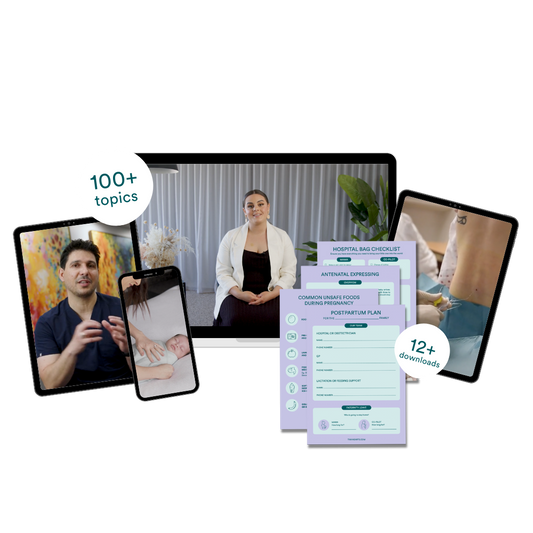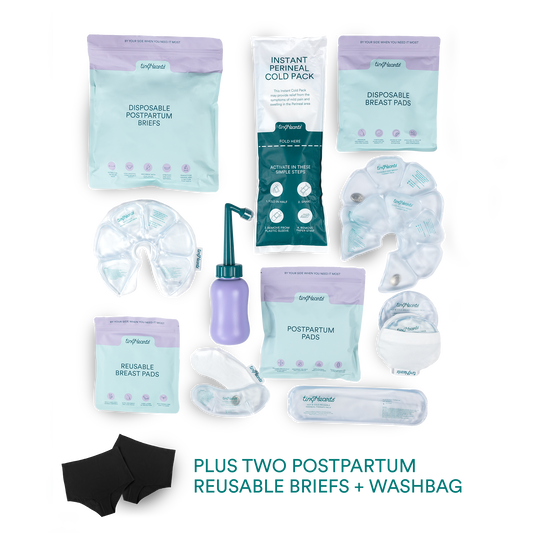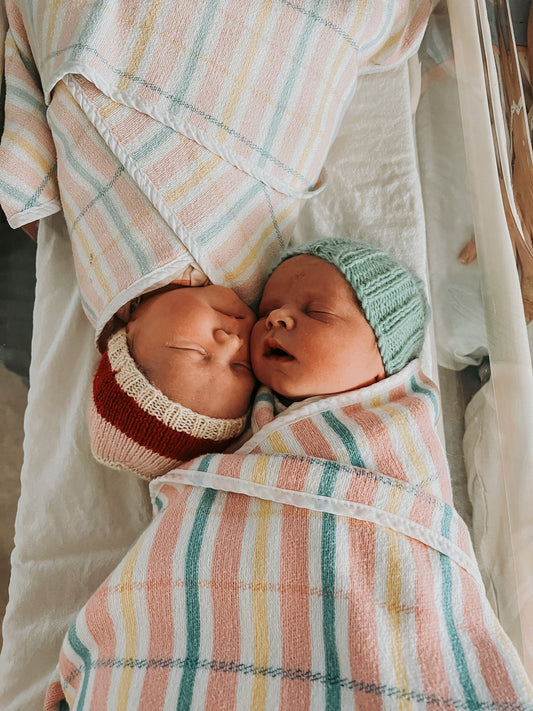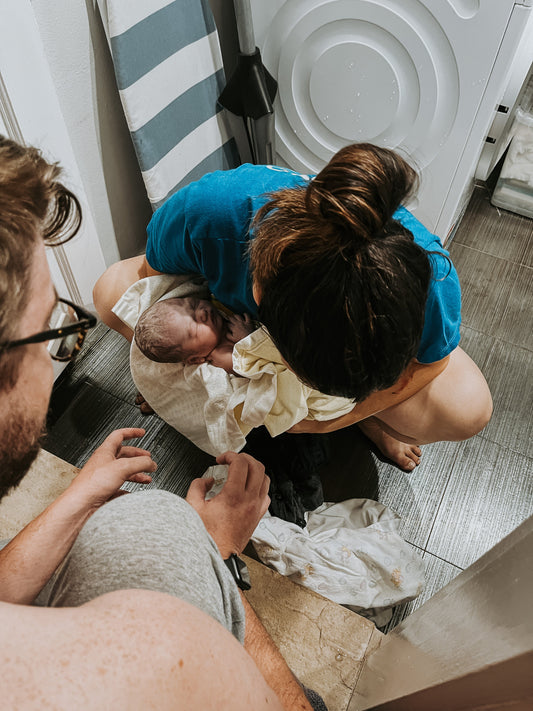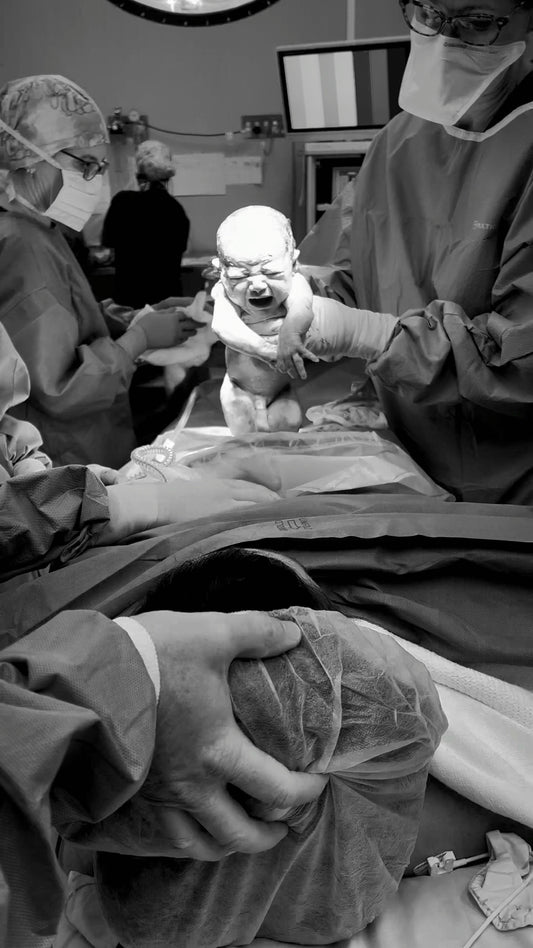My husband Peter and I have two daughters. Sienna who is now two and a half years old and Sophia, who is now four months old!
With Sienna my first daughter, my birth and labour was relatively easy and straight forward, and I was excited to be a first-time mum. I was induced a week early as I had developed preeclampsia but had a very easy vaginal birth with an epidural. Sienna has been an amazing addition to our family, so when the time came to plan for our second baby, I was excited and looking forward to the experience and expanding our family.
However, with Sophia from the start of my pregnancy, I had very severe morning sickness. I was admitted to hospital with Hyperemesis Gravidarum and placed on a drip for 24 hours as I was so dehydrated. I also had to continue taking medication for this to help with the nausea. We actually went to Hawaii at Christmas, and I was in my first trimester during this trip and so sick. On one occasion, we were on a helicopter ride with the most amazing views, but I didn’t get to see a thing as I was so sick with my head down the whole time!
I was very uncomfortable throughout my whole pregnancy, tired and run down (which also comes with chasing around a 2-year-old!). I also had a lot of swelling and high blood pressure, and as I had preeclampsia with my first pregnancy, this was a concern. At around 30 weeks, I was admitted to the hospital as I was experiencing some stomach cramps and feeling lightheaded. It was then that I was told my baby was in the breech position. I had a check-up with my obstetrician (Dr Charles Armstrong) a week later, and he told me that my baby had turned herself around again, into a head-down position which we were happy to hear!
At 36 weeks, I was admitted back into hospital as I was again experiencing the same symptoms, and we were told that our cheeky baby had moved herself back into the breech position. It was at this point that Dr Armstrong advised me I could no longer work and suggested we try an ECV (External Cephalic Version) 2 weeks later and attempt to turn her around for the best chance of a vaginal birth.
On the 25th of June 2019, I was booked in for my ECV, and I was actually at the hospital already this day as my sister gave birth to my nephew! When I made it to my appointment with Dr Armstrong, a scan showed she had once again turned herself around and was no longer in the breech position! We decided then that it was best to be booked in to be induced two weeks later. However, Dr Armstrong advised me that although she was head down, she was still sitting quite high and so there was a high chance of a caesarean needing to be done.

On the 8th of July, we went into St John of God Mt Lawley in Perth WA, and we began the induction process with the prostaglandin gel at 6 pm. The plan was for Dr Armstrong to come back in the morning to break my waters, connect me to the syntocinon drip to get contractions moving and go through the labour process, however, we all know there really is no point in having a plan. My contractions began naturally at around 10 pm, and I had the epidural administered at 11.30 pm. My waters then broke on their own at 4.30 am the next morning, so things had begun to progress well on their own, which we were pleased to hear. At this stage, I was feeling happy and relaxed and looking forward to meeting our second little girl as it felt like things were going as well as they did with my first birth process.
By 7.30 am, I was fully dilated and felt the urge to start pushing!
However, after pushing for an hour, our little girl just wasn’t progressing further and was having difficulty as she was in a posterior (spine on spine) position. Dr Armstrong tried turning our little girl with the kiwi suction but wasn’t successful as her heart rate had started to drop. At 8:30 am we then calmly made the decision together to go down to theatre for a caesarean section.
Down in the theatre room, once the spinal block was administered and I was pain-free, I was feeling in a good (albeit drowsy) mood and less panicky. I was even offering all the nursing staff free trips to Hawaii! I was so surprised at how many people were in the room, and once things started it was exactly 6 minutes from incision to when at 9.31 am on the 9th of July 2019 we finally got to meet our second daughter Sophia!


At first look, Peter and I couldn’t believe how much she looked exactly like our firstborn Sienna!


As Dr Armstrong was stitching up my wound and the paediatrician and midwives were checking over Sophia, one of the midwives advised me that my placenta was not of good quality and had actually erupted away from the umbilical cord and was only hanging by a thread. Just one blood vessel! This was most likely a result of how many times Sophia had been moving from breech to cephalic position in utero so late in the pregnancy with so little room. Dr Armstrong advised me then that the decision to go in for the emergency c-section was actually the best decision we could have made as they were unaware my placenta had become like this. He also said that if I had have kept pushing in a natural vaginal birth, there was a chance my placenta may have become completely detached and then cut off the blood supply to my daughter and resulted in a stillbirth. Something that still chills me to think about. Also given another week and how flimsy the connection between umbilical cord and placenta was, Sophia may have even ripped the umbilical cord away herself and not survived. Her doing all those summersaults was her way of telling us she needed to be earthside!

I then had a very normal and as to be expected recovery in the first few days, and everything was fine up until the day I was meant to go home with our new family of 4! On that day I woke up feeling very twitchy, I had a very high blood pressure, headaches, jaw tension, the nurses discovered protein in my urine, very brisk reflexes and the swelling from my pregnancy had not reduced after birth! After some investigation, the midwives discovered I had developed postpartum preeclampsia five days post-birth. This is very rare and not something I had even heard of happening before as I thought this was only a condition you could get during pregnancy. Given how brisk my reflexes were, I then was having convulsions each time my reflexes were checked that were slowly developing into a seizure.
I was placed on a magnesium sulphate drip and isolated for 24 hours in this time to reduce my chance of going into a seizure! The nurses said I was very lucky that it had been picked up on, and I had not been sent home as they were able to prevent seizures from happening. It was hard during this time to be separated from Sophia only days after giving birth, but she was very well looked after by my husband, my family and the midwives in the nursery.

Once my blood pressure had come down, and I had recovered another week later, I was finally able to leave the hospital and be with my little family! I’m so thankful for the high level of care I received during my pregnancy, labour and birth and recovery from Dr Armstrong and the amazing midwives at St John of God Mt Lawley. I now count my blessings that I have two healthy and beautiful girls and our family is complete!


